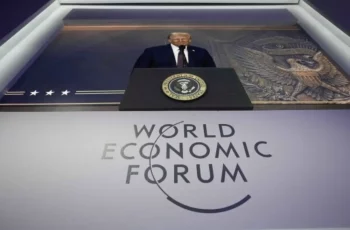
The onus is now on Zelensky to reciprocate Putin’s widely perceived willingness to compromise for peace.
Putin and Trump publicly confirmed that they found a lot of common ground during their three-hour-long talks in Anchorage, but no grand compromise on Ukraine was reached due to “a couple of big [points]…One is probably the most significant” that remain unresolved according to Trump. Putin’s reaffirmation of the need to “eliminate the primary causes of the conflict” and Trump mentioning how Zelensky will “have to agree” with what the US achieved so far strongly hints at what these could be.
As a reminder, Russia’s official goals in the conflict are to: demilitarize Ukraine; denazify it; restore the country’s constitutional neutrality; and obtain recognition of the on-the-ground reality. Putin suggested that he’s become more flexible as of late, which was likely responsible at least in part for why he and Trump just met as well as for Trump’s positive assessment of their talks, so he could hypothetically compromise on one, some, or all of these goals. This places the onus on Zelensky to reciprocate.
In the order that Putin’s goals were mentioned, Trump therefore likely expects Zelensky to either agree to: curtail the size of his armed forces after the conflict ends; get the Rada to criminalize the glorification of WWII-era Ukrainian Nazi collaborators and/or rescind anti-Russian legislation; have them remove the 2019 constitutional amendment about seeking NATO membership; and/or amend the constitution to more easily cede land without first having to hold a successful All-Ukrainian referendum on this issue.
Trump also said that he’ll “call up NATO”, likely referring to the leaders of key NATO countries, who he seemingly expects to facilitate a grand compromise by correspondingly: agreeing not to deploy troops to Ukraine and/or agreeing to curtail arms exports to it; “creatively encouraging” the Rada to pass the aforesaid socio-political, neutrality, and/or territorial cession reforms (e.g. threatening to curtail aid if they don’t); and/or explicitly declaring that they’ll no longer approve Ukraine’s NATO membership bid.
They might not do so willing, however, so it’s possible that Trump could: greatly reduce or even abandon the scale of mid-July’s scheme to sell new US arms to NATO for passing along to Ukraine; threaten to cut off all military ties with any country that deploys troops to Ukraine; threaten to impose more tariffs on countries that don’t “creatively encourage” the Rada to pass the aforesaid reforms; and/or threaten to reduce the US’ role in NATO if members don’t explicitly declare their opposition to Ukraine joining.
If Trump and his NATO subordinates convince Zelensky to agree to some of these compromises, then Putin might agree to: Ukraine retaining a larger military than what was agreed to in spring 2022’s draft peace treaty; not pursue full-fledged denazification (e.g. tacitly accepting that traces of this ideology will remain in Ukrainian society); not object to Ukraine’s limited bilateral cooperation with NATO members; and/or indefinitely freeze Russia’s territorial claims (i.e. still retain but not actively pursue them).
This pathway towards a grand compromise could be derailed by: a Ukrainian false-flag provocation against civilians that turns Trump against Russia; a false-flag provocation elsewhere like in the Baltic Sea to the same end; and/or any serious expansion of Russia’s ground campaign beyond the disputed regions. Trump might not be misled by any false flags while Putin might limit the scope of the special operation as a “goodwill gesture”, however, so peace is possible if Zelensky finally agrees to compromise.
Source: author’s blog










Comments